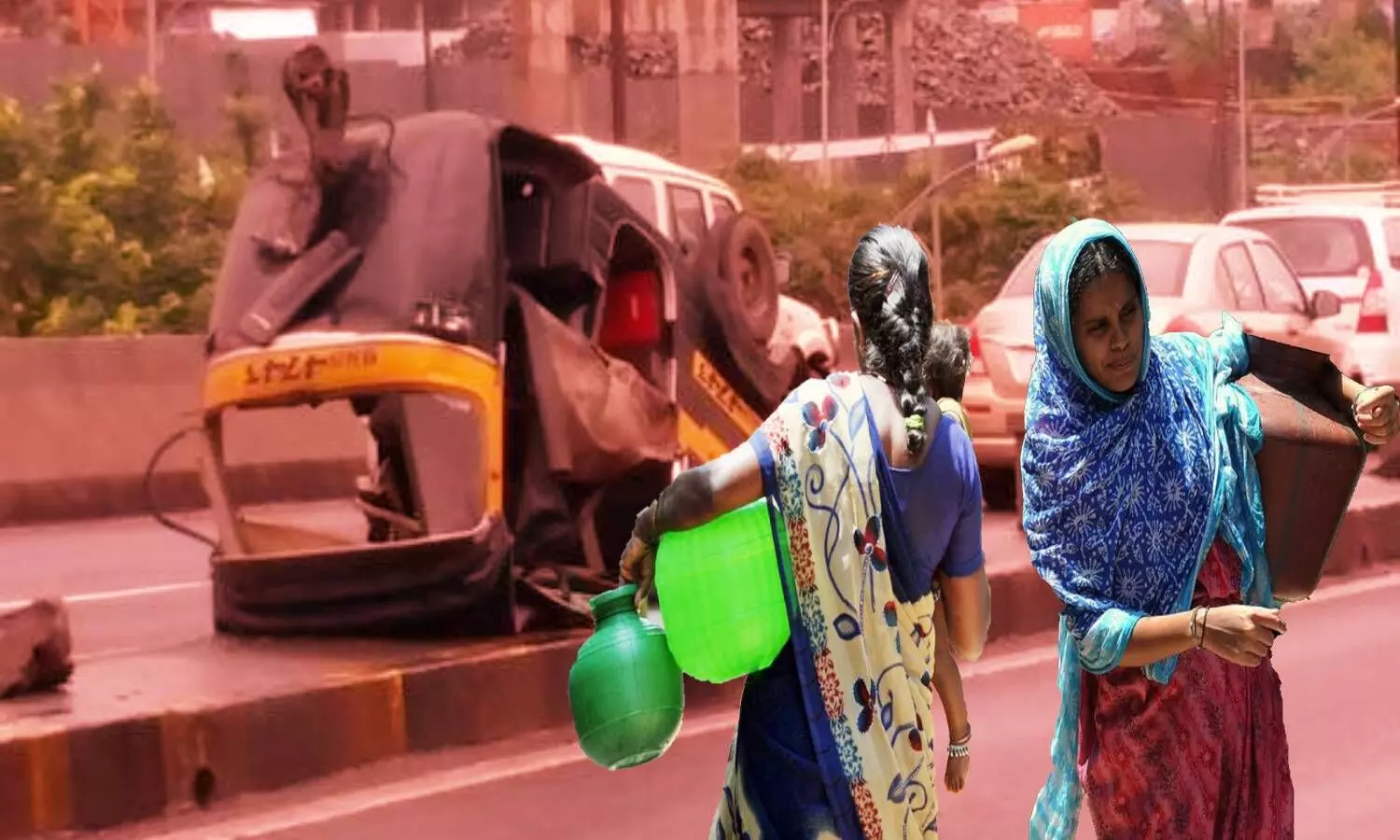Road crashes increase financial burden on Indian women: World Bank survey
Even though accident victims are predominantly male, the impact on household livelihood due to death or injury places significantly more burden on women, a World Bank study to assess the socio-economic impact of road crashes in India has found.
By Sumit Jha
Hyderabad: Even though accident victims are predominantly male, the impact on household livelihood due to death or injury places significantly more burden on women, a World Bank study to assess the socio-economic impact of road crashes in India has found.
After an accident, it is women who have to take up caregiving activities leading to a double burden of labour and mental load, exacerbated inequalities of opportunities in returning to livelihoods, and income-generating tasks.
The study also found that the burden of care disproportionately falls on women which further causes time poverty for women. Additionally, women also have to cope up with 'loss of significant male income'. The study said, "Considering the nature of Indian society, the prevalence of patriarchy and gender-based stereotypes, the need to map the linkages between gender, road safety, and poverty is important."
According to the Accidental Deaths and Suicides (ADSI) in India 2019 report, 1,54,732 people were killed and 4,39,262 people were injured in 4,37,396 road crashes in India in 2019. Out of this, 14.31 per cent or 22,143 were women and of this over 60% per cent died in rural areas. Similarly, over 60% of women were also injured in rural areas.
The study was conducted in four states — Uttar Pradesh, Bihar, Tamil Nadu, and Maharashtra. A respondent in Bihar said, "Being a woman, we face a lot of problems. When a man meets with an accident, it is the woman who has to handle everything from household activities to serving the patient. In case the woman herself is the victim, then the whole house gets disturbed as the men are not able to handle household chores."
Road accidents also financially impact women. They find it difficult to arrange school fees for their children and often have to arrange for money by mortgaging gold jewellery. "We reduced our expenses on unnecessary things such as clothes, going on a vacation, or going to parties but we couldn't cut our expenses on daily needs like food and medicines," one respondent said.
Also, the experiences were different for women who reported a road crash death. For example, one of the respondents mentioned that her sister-in-law moved to her parents' house after the death of her husband in a road crash. This was to provide better education to the children. In fact, a lot of women spoke about the support they received from their maternal house in terms of monetary support as well as load-sharing.
Road accidents also impacted children's education. Since there wasn't enough money to pay the school fees, in many cases children had to either delay school admission or had to completely drop out of school.
One of the biggest impacts which women reported was "time poverty". The women spend most of their time on caregiving activities and household chores. Some of the respondents had to also take up a job and that led to further time poverty.
One respondent said, "My husband was injured (in an accident) and the entire burden fell on my shoulders. I can never forget that time. My husband would often get irritated. I had to raise the kids and look after their education and well-being on my own."
Low-income households more vulnerable
The incidence of fatality post-crash is higher among victims from low-income households (LIH) than high-income households (HIH). As high as 44% of the households in rural areas reported at least one death after a road crash compared to 11.6% of households in urban areas. Similarly, LIH reported twice the number of deaths post-crash vis-à-vis HIH. The risk of a victim undergoing disability after a crash was two times more likely among LIH in rural areas.
The socio-economic burden of road crashes is disproportionately borne by poor households. The decline in total household income was sharper among LIH (75%) than HIH (54%). The severe impact of the decline in income was highest among LIH in rural areas (56%) compared to LIH in urban areas (29.5%) and HIH in rural areas (39.5%).
The ability to cope with financial distress post-crash was better for HIH than LIH. LIHs were three times more likely to seek financial help than HIH. Debt rates were also almost three times higher among LIH compared to HIH after the crash.
In addition to financial distress, poor households experience a deterioration in their quality of life accompanied by psychological suffering and emotional distress.
Inequality in insurance coverage and delay in accessing compensation further mars the quick recovery process among LIH households. Insurance coverage was significantly higher among HIH and households in urban areas vis-à-vis LIH urban areas.